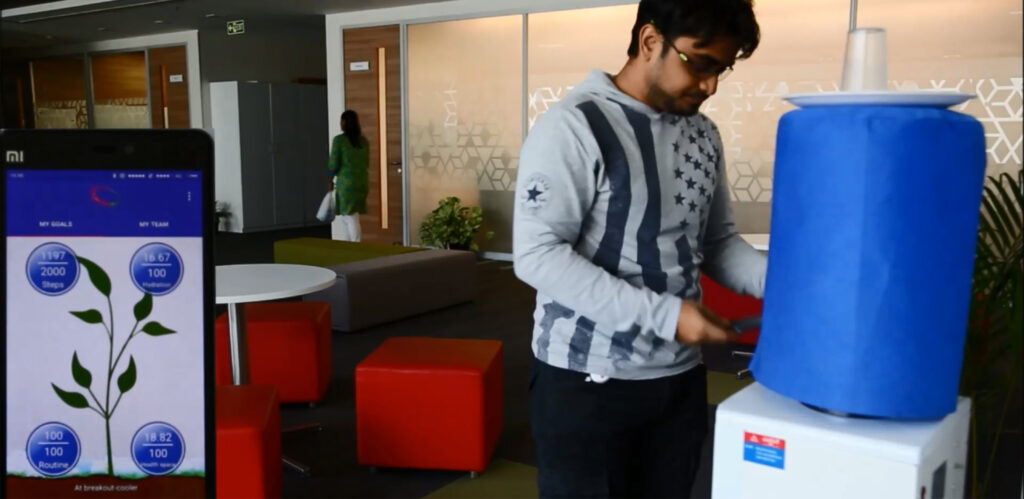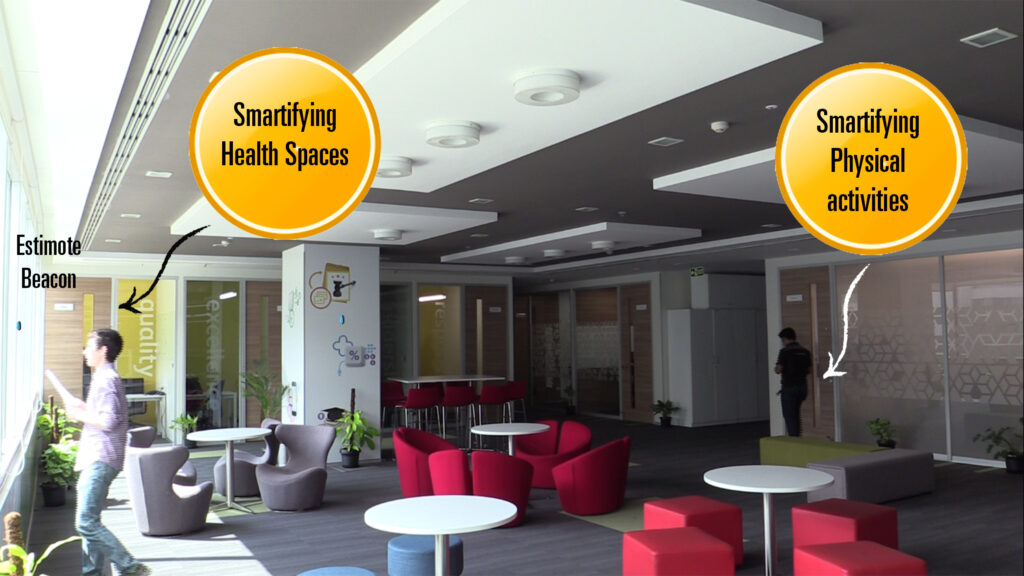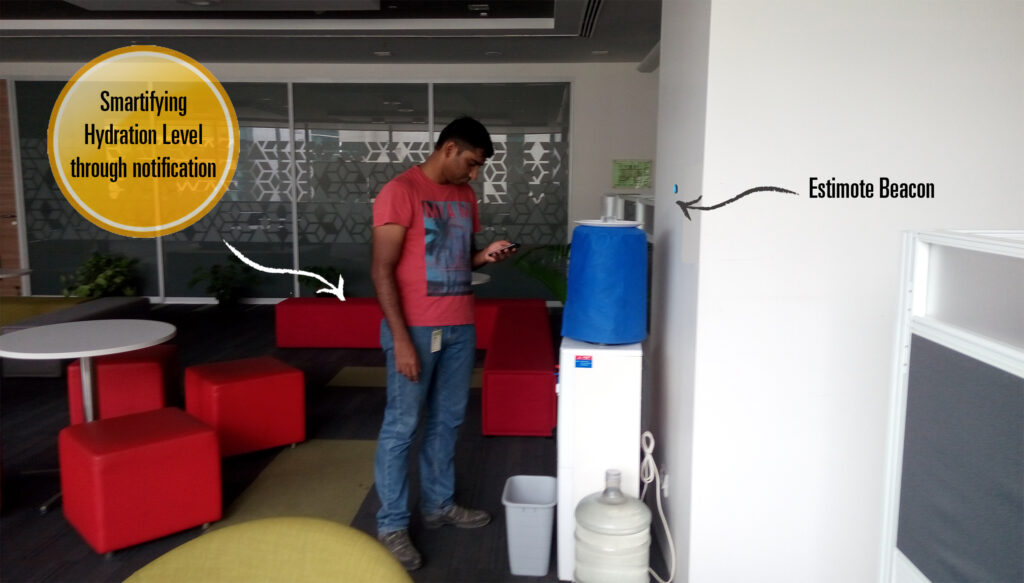Article 6 in the series Data, Design and Civics: Ethnographic Perspectives
 How must we conjure up smart spaces?
How must we conjure up smart spaces?
‘Smart city’ has become an over-indulged urban metaphor, whipping up an apparition of dispersed, highly networked and interconnected socio-economic, infrastructural and communication nodes. The smart city narrative seems to dwell on the idea of cites as ‘receptacles for technology’—and qualitative transformations are brought about by the application of technologies. Even after decades of research to the contrary, we still tell ourselves stories about the inevitable march of technology and its deterministic effect on culture and behavior.
But aren’t cities also places that give birth to technologies? As researchers we are drawn to the miraculous nature of technology to sense, track and quantify not only human use of infrastructure but also the human ‘self’. We are working to disrupt of existing models for mobility and transportation, energy use, waste disposal and overall sustainability of the urban every day, as well as looking at aggregated, integrated, crowdsourced and data-driven service delivery models across social and business verticals.
In this quest to understand the ‘smartness of the everyday’ we offer a motley mix of ideas and experimentation to grapple with several questions, most critically: When do data analytics and ethnographic analysis dovetail to crack a business case?
Big Data and Ethnography as a Relationship
Ethnographic methods do more than ‘add value’ within the world of business research focused on data analytics. We make the case for big data and ethnography as a relationship in generating interpretative insights based on human behaviors—what Curran (2013) calls ‘Big Ethnographic Data’. In a research project we conducted at Xerox Research India on a healthcare platform, we developed ‘pervasive ethnography’ as method to gain insights from diverse user contexts by combining ethnographic techniques, such as video ethnography and in-context interviews, with user activity fingerprinting and mobile application logs.
The healthcare platform we investigated transforms everyday spaces into intelligent receptors and transmitters of data. Our study was an experiment to understand physical spaces as transmitters of rich data about everyday human-infrastructure interactions. We explored work space as a persuasive agent promoting everyday wellness behaviors, and insights from our pervasive ethnography fed into design decisions for a health recommender system.
The approach and lessons from this work have applications to a diversity of public spaces and infrastructures. We explore:
- intelligent data sources and the amalgamation of ‘big’ and ‘thick’ data (Wang, 2013) for the ‘smartification’ of cityscapes;
- how technology applications can ‘sense and track’ human use of urban infrastructure, as well as build ‘smart solutions’ to persuade human behaviors in creating healthy and efficient environments; and
- how we might use data to reimagine collaborative possibilities for humans and the material infrastructures we co-inhabit.
Advances in these areas offers a future promise involving humans, machines, devices and built structures, all of which form an amalgamation and weave their way into the everyday of smartness.
Personalising Persuasion
We developed our pervasive ethnographic experiment within a workspace of a multinational IT company in Bangalore, India. Originally, we set out to build and design a persuasive technology system in the wider field of health behavior change that would influence a patient’s actions in order to reduce high-risk behaviors. We wanted to go beyond just tracking user action on a health platform—the goal was to integrate her physical environment, social context and cognitive state of mind to push the messaging content that would encourage desired behaviour.
In an office setting we could track employee mobility patterns, peer-to-peer, man-machine and human-infrastructure interactions organic to a work place. Mapping these interactions was foundational in designing our persuasive system to influence humans to change habits, patterns and engagement with their environment.
Our research design introduced a self-learning analytical system that dynamically classifies a user according to stages of behavior change based on the Trans-Theoretical Model (Prochaska et al 2009), providing personalized and targeted wellness recommendations with dynamic persuasive strategies in accordance with Cialdini’s Framework of Persuasion (Cialdini 2001). The platform tracks user action and her environment, as well as learns user and context dispositions over time, feeding the platform’s recommender engine with a personalised motivating strategy for targeted behaviour change.
Behaviour change is a process that unfolds over time through a sequence of stages. Any technology program ought to be carefully designed for context and lifestyle attributes unfolding across a time span in the life of a user. Multiple factors such as user environment, social behaviors and material infrastructures are complex challenges for designing interventions for behavior change.
Intervention to persuade must operate at generic and personal levels—a generic system for persuasion personalized to affect individual motivations. We captured a plethora of social and physical contexts to inform the design for a ‘persuasive and pervasive’ application poised to influence and deflect human behaviors toward achieving everyday wellness. Mobile sensing and indoor localization of the office space allowed us to collect seamless data on user’s behavior pertaining to a specific space at work (and could extend to sensing for human behaviors at a transport hub, library, home, etc.).
We designed for infrastructural elements as actors broadcasting persuasive messages—imagine the water cooler in a subway station sending you a comic themed persuasive message to re-hydrate yourself predicated on the time of the day, your work schedule, hydration level and a bunch of health indicators. A combination of actions such as sending jokes through an infrastructurally modulated actor, poking social groups or team members and aiding social collaboration to achieve health goals are a few features of the system we designed. All of this happens through a mobile application.
Collecting Big Data from Human Interactions
How do spaces become data feeders? We explored ways to make our office space a data source for both big data and thick data. A set of spaces in the office were identified for video capture to record human mobility and social interaction: three main co-ordinates emerged to define and code spaces based on human-infrastructure factors:
- Temporal behavioral patterns taking into account the context of time to understand usability of infrastructure
- Nature of interactions apropos to spaces—which infrastructure relates to which kind of interaction among individuals
- Density of interactions to map spaces and human engagement
We built a suite of applications to track and map the spatial and social context of office employees based on concepts of “indoor localization” and Wi-Fi fingerprinting. While mobile sensing through strategically placed iBeacons throughout the office positioned and fine-grained physical contexts of our sampled participants, a set of mobile applications on user phones pervasively detected mobile behaviors in a social space. Heat-map applications aided in identifying and distinguishing uniform motions from accelerated motions for individual users and whether the user is solitary or accompanied by people. The accelerometer sensor in mobile phones detects user motion patterns. Additionally, based on a time-series of observations through heat-maps, inertial trajectories (DiSalle 2001), footfall in targeted spaces were detected temporally. Data from these applications were recorded through system logs, to be analysed by researchers.
In a nutshell, the ultimate objective of our mobile-enabled research of human mobility and social interactions is to provide continuous, reliable and accurate positioning and detecting activities of the users inside a particular spatial setting. All of our data capturing modalities helped reconcile and support observations from video capture to make fine-grained estimates of a user’s spatial and contextual trajectories.
Additionally, our motivation was to convert any given space into a place by associating an emotion with it—and we considered humour to be one of the few emotions an inanimate object can carry or exude, unlike love, anger or respect! Our video ethnography near water coolers lead to observations on how they transform spatially into an enabler of shop talk, gossip, humorous conversation breaking the routines and weariness of work spaces. The title of this post exploits this phenomena in order to create a similar experience through the infrastructure in a spatial setting.
The denouement to our pervasive engagements resulted in WISP, the mobile application and interface designed to spatio-temporally track users, the mechanism persuading behavior change and the chief interaction officer in our universe of pervasive ethnography. Predicated on the tracking data and its co-ordinates, WISP allowed users to leave a desired message in a specific space for their colleagues who receive it as a notification on their mobile phones—the message is floated to the colleague only when she arrives at the particular space. This strategy persuades the user to ‘get mobile’—to move in time and space toward a desired place. We consider this as a step forward in the persuasion pyramid toward actual enactments of motivations. Out next stage in the experiment will add a human layer encouraging collaborative use of WISP among team mates to investigate—using the more conventional ethnographic probes—the twinning of social and physical infrastructure in the art of designing persuasive systems.
We would like to believe that this experiment is a techno-spiritual counterpart to the the Array of Things (AoT)—an urban sensing project, a network of interactive, modular sensor boxes installed in the city of Chicago. Envisaged to be a ‘fitness tracker’ for the city, AoT collects real-time data on the city’s environment and infrastructure status to serve as a measuring device through a network of sensors, communication and computing devices placed throughout the city, including on street corners. These installations measure with a high level of resolution, combing even nooks and corners, things that haven’t been measured before at such microscopic scale (including atmospheric and environmental parameters—temperature, air quality, sound, light , humidity, vibrations, precipitation) and sends data to multiple online repositories that are open and free.
What if an array of sensors you carry on your body (watch, phone) could begin talking to sensors in your city? Your phone could bubble up data on the carbon monoxide you have inhaled or the decibel levels of noise you ingested in the course of a work week in the city; deflect your daily commute to the sunniest, most walkable and dirt-free paths of downtown; let you know how much was ploughed into the ‘green citizen initiative’ you signed up for through the datafication of your mobility patterns. There is great potential power in grabbing data from our everyday environs, deploying it publicly and opening its capability for pioneering ways to combine information that can ‘know what you are, what you want, what you need and gently escort human-infrastructure interaction in productive ways’ (Papka 2016).
Our small yet potent experiment represents an application of the AoT concept in cataloguing spaces through an ingestion of smart and thick data. Integrating quantitative with qualitative investigations through a hybrid blend of sensing, computing and sociable technologies, we amalgamate hitherto distinct methods to understand the human-environment interactions in situ. In approaching and rendering spaces as personalities, both quantifiable and qualifiable and bearing potential to influence human behaviors, we are tethering ‘smart’ not only to the information-scape but also to the panoramic and fuzzy realm of human behaviors.
References
Cialdini, R, B (2007) Influence: The Psychology of Persuasion, New York: Collins.
Curran, J (2003) Big Data or ‘Big Ethnographic Data’? Positioning Big Data within the Ethnographic Space, EPIC2013 Proceedings
DiSalle, R (2002) “Space and Time: Inertial Frames”. In Zaltan, N E, Stanford Encyclopedia of Philosophy
Papka, E M, Introduction to the Array of Things
Prochaska J O & Velicer W F (1997) The Transtheoretical Model of Health Behavior Change. American Journal of Health Promotion, Sep–Oct:12(1):38–48.
Wang, T (2013) Big Data Needs Thick Data, Ethnography Matters, May 13
 Nimmi Rangaswamy is an Anthropologist and manages the Human Interactions Research Team at Xerox Research. Her group of designers, social scientists and HCI professionals focus on bringing user-centric research, ethnographic and qualitative perspectives in envisioning and building future products for Xerox. She has published widely in the areas of Social Media and ICT for development. She was formerly with Microsoft Research.
Nimmi Rangaswamy is an Anthropologist and manages the Human Interactions Research Team at Xerox Research. Her group of designers, social scientists and HCI professionals focus on bringing user-centric research, ethnographic and qualitative perspectives in envisioning and building future products for Xerox. She has published widely in the areas of Social Media and ICT for development. She was formerly with Microsoft Research.
 Saurabh Srivastava is a Research Scientist and MIT TR-35 winner, 2015. He was recognized for his innovation to impact ‘low income and resource stressed communities’ in the following domains: web/speech/gesture interactions, intelligent user interfaces, audio integration methods and usable security. His core work at Xerox Research is combining mobile sensing and IoT to impact accessible education, consumer centric healthcare and customer experience. He has an educational background in Architecture and Industrial design (Interaction design) and was formerly with IBM Research.
Saurabh Srivastava is a Research Scientist and MIT TR-35 winner, 2015. He was recognized for his innovation to impact ‘low income and resource stressed communities’ in the following domains: web/speech/gesture interactions, intelligent user interfaces, audio integration methods and usable security. His core work at Xerox Research is combining mobile sensing and IoT to impact accessible education, consumer centric healthcare and customer experience. He has an educational background in Architecture and Industrial design (Interaction design) and was formerly with IBM Research.
 Tejasvin Srinivasan is an undergraduate in engineering design at Indian Institute of technology, Madras. His primary interest lies in product design for health care and lifestyle applications. His past projects are in the fields of IoT, mobile health, assistive devices, AI and biomedical devices. His research interests are BCI devices, physiological computing and HCI for biomedical applications. In the past, he has worked with AgeLab, MIT and HCI group, XRCI.
Tejasvin Srinivasan is an undergraduate in engineering design at Indian Institute of technology, Madras. His primary interest lies in product design for health care and lifestyle applications. His past projects are in the fields of IoT, mobile health, assistive devices, AI and biomedical devices. His research interests are BCI devices, physiological computing and HCI for biomedical applications. In the past, he has worked with AgeLab, MIT and HCI group, XRCI.
 Priyanka Sharma works in the area of HCI as a Research Engineer and focuses on building client facing technologies in the domains of health care and urban mobility. She received an MS (by research) degree in computer science from IIIT Hyderabad. She is an interdisciplinarian, with past research projects in customer retail, health care devices, transportation, and spatial cognition. She is an active member of Google Developer Group (GDG), Hyderabad, and has delivered multiple sessions on various research topics.
Priyanka Sharma works in the area of HCI as a Research Engineer and focuses on building client facing technologies in the domains of health care and urban mobility. She received an MS (by research) degree in computer science from IIIT Hyderabad. She is an interdisciplinarian, with past research projects in customer retail, health care devices, transportation, and spatial cognition. She is an active member of Google Developer Group (GDG), Hyderabad, and has delivered multiple sessions on various research topics.
Related
Introduction to Data, Design & Civics: Ethnographic Perspectives by Carl DiSalvo
Innovation Teams, Mundane Innovation, and the Public Good, Andrew Richard Schrock
Ethnography of Civic Participation: The Difficulty of Showing Up Even when You Are There, Thomas Lodato
Ethnographies of Future Infrastructures, Laura Forlano
Human-Centered Research in Policymaking, Chelsea Mauldin & Natalia Radywyl



0 Comments